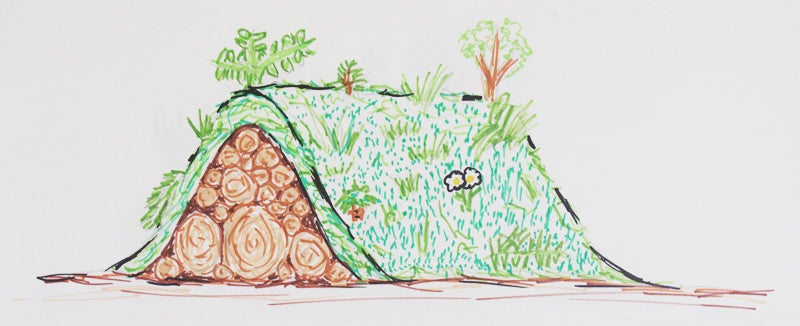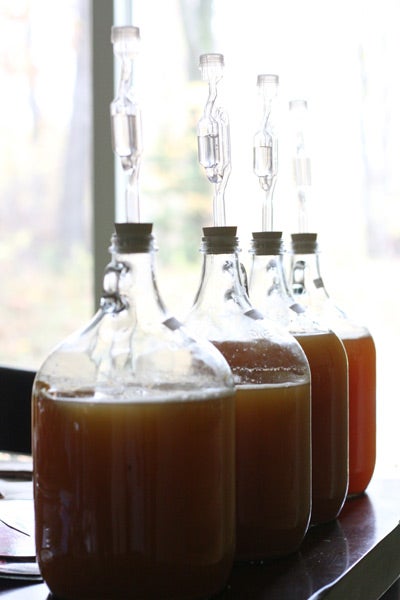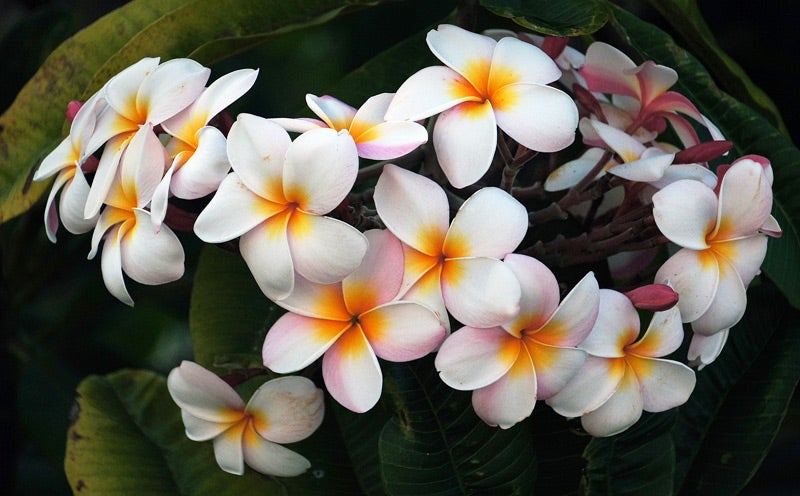Find out if Hugelkultur (Hoogle Culture) is right for you!
Listen 00:52:57If a tree falls in your backyard and nobody hears it, can you plant a garden on it? Mike McGrath will answer yes as we delve into the basics of “hoogle culture”.
Question of the Week
A big tree fell over in our backyard this winter. Luckily it didn’t hit anything important. The main part of the tree has been cleared away. Now there is a giant root ball covered in dirt that pulled out of the ground. Instead of disposing of it, I think it would be cool to add more dirt to make a big mound and grow plants and flowers on it. What plants would grow well on a decomposing stump? It would be nice to have flowers and plants that are beneficial to bees and birds. It’s in a sunny location.
Joanne in Delaware County PA
Learn what to do when your houseplants outgrow your house »
-

Photo by Flickr user Mark
Highlights from show for February 27, 2016:
Phalaenopis Orchids
Carol in Oklahoma rescues plants that grocery stores throw away after the holidays. This year, after Valentine’s Day, Carol rescued about eleven dozen long-stem roses. She also acquired about 11 or 12 orchid plants and called Mike to inquire about how she should care for them. Mike says these phalaenopsis orchids are the most common, they’re easy to raise, and inexpensive. He said they flower repeatedly, with up to 30 buds on a stem, each bud blooming after another, so they look like butterflies. Mike advises getting rid of anything around the pot that will hold moisture, like decorative foil. Orchids, Mike says, are naturally epiphytic in the rainforest, and enjoy shaded ares beneath the canopy of the trees. He says to keep them out of direct sunlight in ambient light. Lastly, he says these rainforest plants enjoy humidity, so Carol should mist them daily.
“The flowers will open up in sequence, so that when you get seven or eight of them open at once, it really does look like butterflies, or the person who gave it the common name of moth orchid thought they looked exactly like tropical moths they had seen in the rainforest.”
-

Photo by Flickr user Choo Yut Shing
How to trade moss for grass
Bill in West Philadelphia is looking to buy a home in the Philly suburbs, but has concerns about its lawn. Bill wants to know why the entire backyard is covered in moss, as opposed to grass. Mike says moss has both pros and cons. Some people prefer moss because it is low-maintenance. Moss, Mike says, needs three things: moisture, shade, and most of all, an acid soil. If the goal is to get rid of the moss however, one could treat the lawn with lime or wood ash to raise the pH to give the grass a chance to grow. Mike says that even the most shade-tolerant grass needs at least four hours of direct sunlight a day. So, if there is not enough sunlight to sustain a grass lawn, moss is an alternative option.
Rehabilitating apple trees
Nathan in Springfield, Massachusetts has concerns about apple trees. He developed an interest in them when he lived in New Jersey, and brought seeds up to Massachusetts with him. He has been raising the trees from seedlings, and now has six-month-old sapling bushes in his basement, growing under lights. They’re getting too big for the basement now, and Nathan needs advice.
-

Photo by Flickr user Chiot’s Run
“Apples were grown less for fresh eating than they were for making hard cider. Alcohol was hard to come by, but if you had a grove of trees producing who-cares-what-kind of apples, then you could make cider and then ferment it, and the cider was universally tasty and very high in alcohol.”
Greenhouse growing
Michelle in Haines, Alaska has a greenhouse rehab project going on, and she has a small eight-by-eight foot greenhouse on a plywood platform. She wants to put some raised beds in the greenhouse, but wants to know how to construct a drainage system that won’t rot the wood of the floor. Mike says that when he built his greenhouse, he built a bench and put containers on top of the bench. He also suggests putting planking down on the floor. Mike also suggests grow boxes on stilts, because they’re easier to reach and further from the cold ground. He says modular systems are more fun because they make rotation easier. Michelle asked about a potential heat sink, and Mike suggests using stones or a stone wall that will absorb the heat from the sun during the day and continue to radiate that heat at night, thus creating a passive heat source.
Preserving your pulmeria
Lisa in Manayunk, Pennsylvania has a basement with grow lights and a nice deck for outdoor plants. She is about to be the proud owner of a five-gallon rooted plumeria. She is nervous about how to prepare for this tropical plant that will be delivered from Florida. Mike says there are not many places in the United States that this plant can naturally grow outside. Mike says these plants go through a period of “true dormancy.” He tells Lisa not to panic if the plant drops all its leaves and the leaves turn yellow. He says this is normal. This is what happens when the plant is not outdoors in very warm weather. He tells Lisa to ask the shipping company or nursery if the plant that is being shipped will be dormant or flowered.
“Get it down to your little shop of horrors, get those bright lights on it, lie to the thing. Try to convince it, ‘Now it’s June! It’s June! It’s really June outside!” and then when it really is June outside, you take it out.”
-

Photo by Flickr user Bernard Spragg
Healthy Lawns Act
Julie in Montgomery County, Maryland was working on a bill with her local county council called the Healthy Lawns Act. Maryland’s Montgomery County became the first county in the country to restrict the use of lawn pesticides and herbicides. Julie says the law will take place in two phases. First, this summer, bill will go into effect for county properties. Then, in the second phase, the act will restrict use of these chemicals on private property. To learn more about the organization, or to help out, our listeners can visit safegrowmontgomery.org.
WHYY is your source for fact-based, in-depth journalism and information. As a nonprofit organization, we rely on financial support from readers like you. Please give today.

